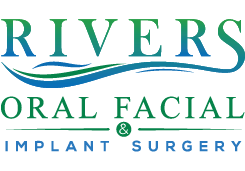
Tooth Extractions
There may come a time that a tooth needs to be extracted or pulled. A tooth may be extracted if it:
- Is severely decayed
- Is broken or damaged beyond repair
- Has advanced periodontal disease
- Is poorly positioned, impacted, or in preparation of orthodontic treatment
If one or more of your teeth requires removal, it is important to discuss your best options for treatment and subsequent replacement of the missing tooth with Dr. Rice.
In many instances you may be a candidate for a dental implant or a series of implants. The dental implant replaces the root where the tooth has been extracted and then has an implant crown secured to replace the missing tooth. In other cases a dental bridge is suggested.
In any instance, unless the extraction is due to orthodontic needs or it is an impacted wisdom tooth, it is important to know that not only aesthetics but also health are affected. Even the removal of a single tooth can lead to problems related to your chewing ability, problems with your jaw joint (TMJ dysfunction) and shifting teeth, all of which can have a major impact on your dental and overall health.
THE TOOTH EXTRACTION PROCESS
Prior to the extraction Dr. Rice will numb your tooth, jawbone and gums that surround the area with a local anesthetic.
During the extraction process, you may feel pressure; however, you should not experience discomfort.
If you do feel uncomfortable at any time during the extraction procedure, please let us know right away.
AFTER TOOTH EXTRACTION
After tooth extraction, it’s important for a blood clot to form to stop the bleeding and begin the healing process. Bite on a gauze pad for 30-45 minutes immediately after the appointment. If the bleeding or oozing still persists, place another gauze pad and bite firmly for another 30 minutes. You may have to do this several times to staunch the flow of blood.
After the blood clot forms it is important to not disturb or dislodge the clot. Do not rinse vigorously, suck on straws, smoke, drink alcohol or brush teeth next to the extraction site for 72 hours. These activities may dislodge or dissolve the clot and hinder the healing process. Limit vigorous exercise for the next 24 hours, as this increases blood pressure and may cause more bleeding from the extraction site.
After the tooth is extracted you may feel some pain and experience some swelling. An ice pack or an unopened bag of frozen peas or corn applied to the area will keep swelling to a minimum. Take pain medications as prescribed. The swelling usually subsides after 48 hours.
Use pain medication as directed. Call our office if the medication doesn’t seem to be working. If antibiotics are prescribed, continue to take them for the indicated length of time even if signs and symptoms of infection are gone. Drink lots of fluids and eat nutritious, soft food on the day of the extraction. You can eat normally as soon as you are comfortable.
It is important to resume your normal dental routine after 24 hours. This should include brushing and flossing your teeth at least once a day. This will speed healing and help keep your mouth fresh and clean.
After a few days you should feel fine and can resume your normal activities. If you have heavy bleeding, severe pain, continued swelling for 2-3 days, or a reaction to the medication, call our office immediately.
